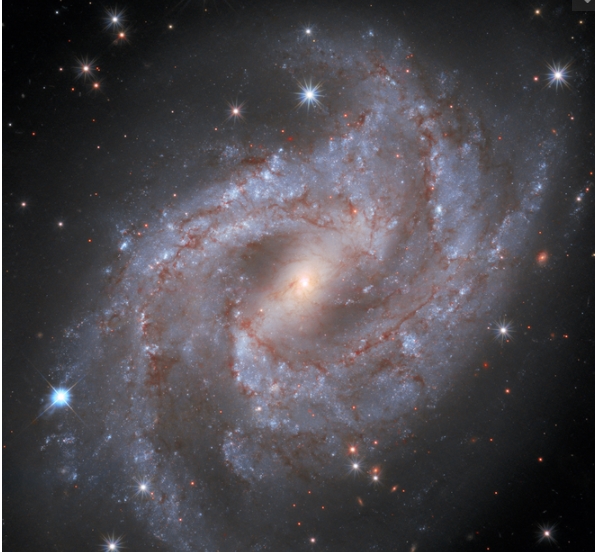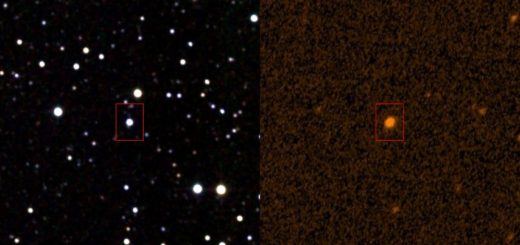Hubble Space Telescope watches stunning supernova fade over a full year

Tens of millions of years ago, the corpse of a star stole away too much gas from a neighbor and exploded, becoming a beacon in the cosmos — one that took a full year to fade away.
Fortunately for scientists, the massive stellar explosion, called supernova 2018gv, took place 70 million light-years away, and the Hubble Space Telescope was in prime position to watch the lightshow. Astronomers used the instrument to create a timelapse showing the supernova’s year-long fade, from February 2018, shortly after the explosion was first detected, through February 2019.
“No Earthly fireworks display can compete with this supernova, captured in its fading glory by the Hubble Space Telescope,” Adam Riess, an astrophysicist at the Space Telescope Science Institute and Johns Hopkins University in Maryland and leader of the team behind the new footage, said in a statement.
The supernova occurred in a large spiral galaxy called NGC 2525, toward the outer edge of one of the galaxy’s prominent arms, where a white dwarf — itself the superdense remnant of a dead star — and its companion star circled each other.
But as they danced across their corner of the universe, the white dwarf was gradually glomming onto gas, pulling it away from its companion and growing larger. Until it no longer could.
An annotated version of the Hubble Space Telescope image of a bright supernova offers a sense of scale for the galaxy NGC 2525.
An annotated version of the Hubble Space Telescope image of a bright supernova offers a sense of scale for the galaxy NGC 2525. (Image credit: NASA, ESA, and A. Riess (STScI/JHU) and the SH0ES team)
The white dwarf exploded, releasing in just a few days as much energy as our sun does in a few billion years, becoming by far the brightest thing in the galaxy. But that peak brightness, astronomers know, is standard for this type of supernova.
Hence Hubble’s interest in watching the supernova: because that brightest setting is fixed, scientists can use these flashes to measure distances across the universe, finetuning their estimate of how quickly the universe is expanding.



 Creators of mankind
Creators of mankind Description of “Tall white aliens”
Description of “Tall white aliens” Where they came from?
Where they came from? About hostile civilizations
About hostile civilizations The war for the Earth
The war for the Earth “Tall white aliens” about eternal life
“Tall white aliens” about eternal life Video: “Nordic aliens”
Video: “Nordic aliens” Aliens
Aliens Alien encounters
Alien encounters The aliens base
The aliens base UFO
UFO Technology UFO
Technology UFO Underground civilization
Underground civilization Ancient alien artifacts
Ancient alien artifacts Military and UFO
Military and UFO Mysteries and hypotheses
Mysteries and hypotheses Scientific facts
Scientific facts


















